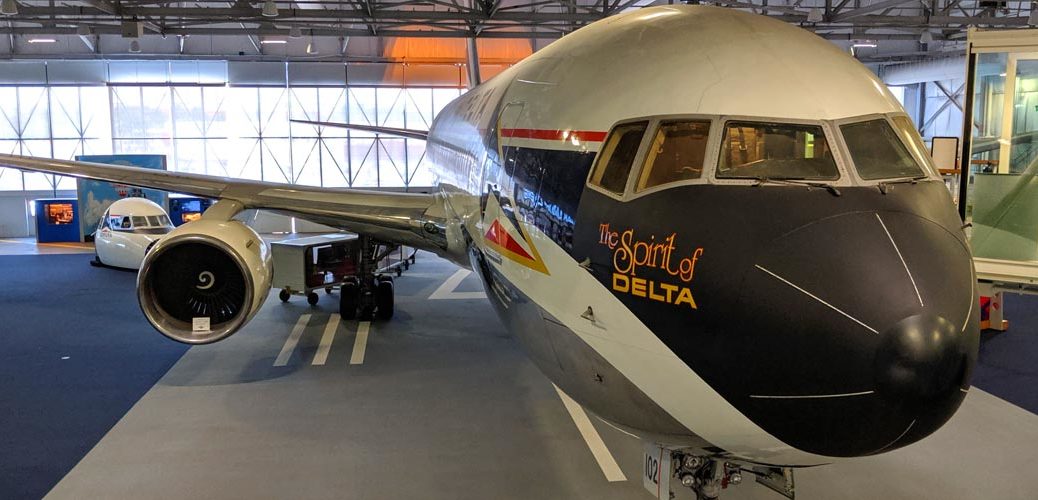On my first visit to Atlanta, Georgia, my partner took me to visit the Delta Flight Museum at the airline’s corporate campus adjacent to the massive Hartsfield-Jackson International Airport. Photos from when we stopped by on the afternoon of September 9th, 2019 are viewable on Gallery.

Situated in two historic hangars, the museum’s collection includes an impressive selection of restored and recreated aircraft. In the first hangar, dedicated to the propeller age, are a number of exhibits — a recreation of the Huff Daland Duster bi-plane used for crop dusting well before Delta existed as a passenger carrier; the lustrous 1940 Douglas DC-3 Ship 41, purchased and maintained by former Delta employees (with almost a half-million rivets stamped into the metal frame); a 1931 Travel Air 6B Sedan with livery of the Delta Air Service. Mounted from the rafters of the cavernous structure are a Northeast Airlines Stinson Reliant and a Northwest Airways Waco 125 bi-plane. Along the walls are displays of various equipment used in the early days, models, artifacts and even a leather holster from when pilots were deputized to protect the delivery of US mail.

The second hangar is devoted to the jet age, dominated by the Boeing 767 christened as The Spirit of Delta, the first of its kind purchased by the airline. Open to walk through, this aircraft flew as a flagship for Delta, and was repainted over the years to celebrate the 1996 Summer Olympics and the company’s 75th anniversary in 2004. Onboard is a showcase collection of outfits worn by flight attendants and service items used over the years. Surrounding the 767 are more displays, including an uncovered jet engine, a control panel from a Lockheed 1011-1 Tristar jet, flight simulator (which requires separate admission) and more.
Google Maps even has an online tour of the 767, giving those who can’t visit in person an opportunity to board this plane.
Before exiting the museum to visit the Boeing 747-400 opposite the parking lot (which is shared with the corporate office and maintenance facility), we stopped in the gift shop. Since I have a family member who works in the aviation industry, I had to be very selective on my purchase since using a coffee mug at work with a competing company’s logo might be cause for concern.

None of these aircraft pale in comparison to the mighty Boeing 747-400. Parked outside, this recent addition to the museum, is the first to greet you upon arrival. As one of the largest and most well-known airplanes ever created, the 747-400 is astounding and the work put in to make such a part of human achievement available for public viewing was no small task. The interior is split into two: the forward is configured to what it would’ve looked in revenue service, with the rear opened up for a peek at the infrastructure very few ever get to see. Braving the searing Atlanta heat, there’s a viewing platform over the starboard wing of the 747-400; perfect for selfies or a panorama shot of the Queen of the Skies. This is probably the only time I’ll ever get to sit in a first class seat on an airplane!
No aerophile should pass up an opportunity to check out this collection. The museum is located at 1220 Woolman Place in Hapeville, GA. Tickets for admission are available online or in-person at the museum itself. Delta employee admissions are complimentary, while those who work for other airlines are offered discounts, or if you’re like me and don’t work for any airline at all, then regular pricing is in effect. Remember to bring ID as the museum is located within an active airport.
Did you find a typographical or factual error in this article? Please let us know!
